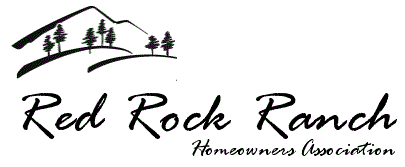HOA Educational Articles for Members
- Details
- Hits: 548
Pavement Condition
El Paso County’s transportation network consists of more than 2,200 centerline miles of public roadway, ranging from major thoroughfares in urban areas to rural gravel roads and neighborhood streets and cul-de-sacs.
El Paso County Department of Public Works maintains over 1,170 centerline miles of paved roads, which equates to over 2,385 lane miles. 223 of the 1,100 centerline miles are chip sealed. Centerline miles include both sides of the road, whereas lane miles are the individual lanes (2 or 4 lanes depending on the road).
In 2023, a consultant surveyed the roads, and data was collected and analyzed on 2,221 centerline miles of pavement. This includes both paved roadways and gravel roads.
Information gathered included the pavement thicknesses, existing asphalt crack data and the pavement condition index (PCI).
The Pavement Condition Index (PCI) provides a numerical rating for the condition of road segments within the road network, where 0 is the worst possible condition (impassable), and 100 is the best (perfect condition).
The PCI tells public works officials the current condition of a road and the anticipated rate of deterioration of that road over time. The PCI values are used in prioritizing, funding, and executing maintenance and rehabilitation programs.
In order to determine the health or condition of the streets, the Pavement Condition Index (PCI) is used. The PCI is a 0-100 rating scale based on the physical and structural condition of a road:
- PCI scores of 70 to 100 are considered “satisfactory or good”. These are newly built or resurfaced roads that show little or no distress.
- PCI scores 50 to 69 are considered “fair” with only slight to moderate distress, requiring primarily preventative maintenance.
- PCI scores 25 to 49 are considered “poor” and are worn to where restoration may be needed to prevent further deterioration.
- PCI scores 0 to 24 are considered “serious” and may require full reconstruction.
The pavement network is composed of different classifications such as arterials, collectors, and residential (local) streets.
Arterials are characterized by higher speeds, more truck, bus, and automobile traffic and typically have four lanes or more.
Collectors function to “collect” traffic from residential streets and funnel them to arterials.
Residential streets (local) are typically two lanes and have much lower speeds and traffic.
Historical Funding
When funding is limited, like in El Paso County, decisions must be made as to which departments get the financial resources.
When the distributed finances reach the Department of Public works, more decisions are made regarding which projects and which roads will receive maintenance or repairs.
The Department of Public Works performs pavement maintenance each year through private contracts and utilization of Department staff.
Funding for pavement maintenance typically comes from a combination of grants and local, state, and federal sources. These funds are used for all road-related expenses, not just pavement maintenance.
Pikes Peak Rural Transportation Authority (PPRTA)
The Pikes Peak Rural Transportation Authority (PPRTA) is a collaborative effort among five regional governments, including the cities of Colorado Springs and Manitou Springs, El Paso County, and the towns of Green Mountain Falls and Ramah.
The PPRTA collects a voter-approved 1 percent sales tax to improve and maintain roads and support public transit. The PPRTA allocates 35% of its budget for maintenance and is the county’s primary funding source for pavement maintenance projects.
Projects include various infrastructure maintenance such as asphalt paving, milling and overlay, chip and slurry seal, bridge repair, maintenance of signs, signals, and pavement markings, and concrete work such as replacement curbs, gutters, sidewalks, and pedestrian ramps.
El Paso County spent $3,865,139 for the 2018 PPRTA Asphalt Rehabilitation Program. That amount was used for paving 23.6 centerline miles of roadway.
In addition to paving these roads, they were also patched, striped, shouldered, and thermoplastic street markings were installed. ADA improvements were also completed, and sub-grade repairs were performed as necessary.
Road and Bridge Fund
The Road and Bridge Fund provides for the construction and maintenance of County roads and bridges financed by property taxes, highway user taxes, and other revenues restricted to use on roads and bridges.
In 1992 one tax dollar collected purchased one dollar of construction. Due to inflation, that same dollar will likely purchase less than 20 cents of goods and labor by 2034.
The Road and Bridge Fund allocates funds to construct and maintain roadway-specific projects such as repaving roads, repairing and replacing bridges, snow removal operations, drainage maintenance, replacing culverts, and other infrastructure maintenance projects.
The average Single-Family Residence in El Paso County pays an estimated $7.09 in Road and Bridge taxes.
Click to go to the Assessor’s webpage to see how much you are paying to the El Paso County Road and Bridge fees. (Put your address into the page’s search bar.)
Report Deteriorating roads to El Paso County Public Works
- Details
- Hits: 599
 Recommended Additional Resources
Recommended Additional Resources
Supplement to FACO Webinar (April 2024)
**asterisk denotes it was directly referenced in FACO webinar
**Supplemental Webinar: Affordability & Accessibility Colorado Division of Insurance
United Policyholders, Professional Independent Insurance Agents of Colorado March 26th 2024
https://drive.google.com/file/d/18tA7IAegMmr_NId-J57ZGa34CZq7Mzrb/view
- Understanding Reconstruction Costs & Insurance Gaps 0:00-10:41
- Standard shopping tips, and updated tips for current conditions from United Policyholders
23:21 - 37:54
- Guidance for HOAs including how this relates to the FAIR plan that is under development
42:35-53.49
**Wildfire Prepared Home Resources: IBHS (Insurance Institute for Business & Home Safety)
- IBHS Videos. Click the “why” button to open a video on the topic. Mike Thayer referenced
videos #5 and #6 in his presentation https://ibhs.org/wildfireready/
- More information on IBHS Wildfire Prepared Home https://wildfireprepared.org/
Wealth of resources to support homeowners on the United Policyholders website including
- **Confidential Survey to help inform marketplace trends & household needs: United
Policyholders https://www.surveymonkey.com/r/COhomesurvey
- Claims guidance library https://uphelp.org/claim-guidance-publications/
- Dropped by Your Insurer?:
https://uphelp.org/dropped-by-your-home-insurer-dont-panic-try-our-tips/
- How to Assess Your Homeowners Insurance:
https://uphelp.org/wp-content/uploads/2023/12/LISTOS-Home-Insurance-Check- UP-English.pdf
- Disaster Recovery Guide: https://uphelp.org/disaster-recovery-handbook/
Toolkit for Homeowners & HOAs on Insurance: Colorado Division of Insurance
https://doi.colorado.gov/homeowners-hoainsurancetoolkit
- Common Terminology Guide
- FAQs for homeowners & HOAs
- Owners of Condominiums & Townhomes
Home for Current Status & Updates on Colorado Fair Plan as they unfold
PIIAC “no coverage” inquiry form - when consumers have exhausted all the options and still can't find carriers, you can use this link to reach out for support. They can advise options you may not have considered. This is introduced in the referenced webinar above.
https://form.jotform.com/PIIAC/consumer-homeowner-inquiry
Additional correspondence with Fire Adapted Colorado (FACO). If your organization is planning
continued guidance & dialogue, we are happy to share what we have & promote your event.
Website: https://fireadaptedco.org/ Email:
**Subscribe to the FACO newsletter:
https://fireadaptedco.us16.list-manage.com/subscribe?u=6423c1c49538e3567fb6d668d&id=1f0cc7b37e
Youtube: GMT20240423 190012 Recording 1920x1200
- Details
- Hits: 609
Insurance—What Is Going On Right Now?!?
If you haven’t looked at your insurance in the past year, you may be saying what?!? when you do. While it has always been a necessary evil, it is something that both individuals and associations alike must obtain, and never before has it been so expensive or near impossible to secure. Insurance provides protection for all of those “what if” scenarios which could devastate an individual or association. However, in today’s insurance market, it is neither a given that insurance is obtainable, nor is it a given that, if insurance is obtainable, it is affordable. So, where does that leave an association?
If your association is seeing a premium/rate hike above and beyond the normal inflation rates seen over the last few years, the increases are likely being driven by several factors:
- Wildfire. Insurance carriers who underwrite coverage for associations in Colorado are taking a close look at wildfire exposure, triggered in part by the increase in wildfires across the Western United States and in part triggered by the Marshall Fire. Many insurance carriers will use companies such as Core Logic, RedZone or MapRisk to obtain brush score reports. These companies evaluate the wildfire risk of a property or community by providing an easy to understand score (each company uses a slightly different scoring system, so numbers are not comparable across companies). Wildfire scores are generally calculated by looking at a variety of factors which could include slope, aspect, vegetation/fuel, surface composition, windblown embers, or prior fire data for the area. These factors are all weighted differently and combine to form the fire risk score. As a general statement, these scores are increasing year over year, leading to continuing issues with respect to insurability. A high fire risk score will impact premiums and, potentially, the ability to even secure insurance.
- Reinsurance Markets. Reinsurance is insurance for insurance companies. Insurance companies use reinsurance as a method of transferring a portion of the insurers financial risk to another insurance company, i.e. the reinsurer. Given the number of catastrophic losses over the last few years, floods, hurricanes, fires, etc., the reinsurance market is contracting. These constrictions throughout the reinsurance market are leading to a situation where primary carriers are struggling to obtain additional reinsurance coverage from fewer reinsurers. This is leading to rate increases which further complicates an association’s ability to obtain full replacement cost coverage and worst-case scenario for an association, the inability to secure insurance.
- Building Costs. Generally, as a country, we are still suffering supply chain issues and high inflation. These factors, while impacting product availability in the general retail market and what these products cost, also has a direct impact on insurance and building material replacement costs. Replacement costs are one of the factors analyzed when property coverage decisions are made. Higher material costs and supply-chain issues are leading, in part, to higher insurance premiums. In addition, labor shortages lead to longer construction and claims-handling times and negatively impact the cost of claims, which could impact the cost of premiums.
- Miscellaneous Factors. In addition to the above, use of units as short-term vacation rentals, current claim history, and open claims are having major impacts on the availability of insurance, with some carriers even declining to look at the community due to these factors.
What can you do about it?
- Speak with the Association’s Broker. Be proactive. Reach out to the association’s insurance broker with ample time before the policy expiration to get an understanding of what renewals premiums look like and options for the association.
- Speak with Legal Counsel. There may be options for the association, depending on the age and type of community, such as transferring current association insurance obligations to individual owners, drafting maintenance and insurance charts, or insurance audits. This will be a fact specific analysis and qualified legal counsel should be able to provide guidance on this matter.
- Participate in Firewise, if applicable. Firewise USA is a national recognition program that provides instructional resources to inform people how to adapt to living with wildfire and encourages neighbors to work together and take action to reduce their wildfire risk. Participation and designation as a Firewise community, while beneficial to the general wellbeing of a community when dealing with fire risk mitigation, may also positively impact insurance coverage and rates. The State of Colorado provides an interactive website which pinpoints fire risk for individual communities.
- Manage Your Existing Policy. An association may want to self-insure on smaller claims to preserve the policy for large losses impacting multiple units.
What is the State doing about the insurance issue?
State lawmakers have Introduced HB23-1174, Homeowner’s Insurance Underinsurance. Among other things, the bill would create guaranteed replacement cost coverage in homeowner’s insurance. This means an insurer would be required to pay the full cost to repair or replace a damaged or destroyed structure, even if the amount exceeds the policy limits. The bill also specifies certain factors insurers must consider when determining the replacement costs of a dwelling. It further extends the termination notice period by an insurer from 30 days advance notice to 60 days advance notice. This bill is sponsored by Judy Amabile of Boulder, as introduced on February 6, 2023.
While insurance has always been a complicated issue, the current insurance landscape is beyond what many individuals and brokers have ever experienced, with many moving parts and many unknowns. Therefore, being aware and taking any proactive steps possible is recommended.
Altitude Law Resource article
For more information or if you have any questions, please contact one of our attorneys at 303.432.9999.
- Details
- Hits: 733
Carbon Monoxide Alarms Required
Summary of House Bill 09-1091/Carbon Monoxide Alarms Required
On and after July 1, 2009, carbon monoxide alarms are required in:
- Homes for sale
- Homes for rent
- Certain remodels of single-family homes and ‘multi-family residences.’
‘Multi-family residences’ include condominiums and townhomes or other attached homes.
Installation Locations
Carbon monoxide alarms must be installed within fifteen feet of the entrance to each room legally used for sleeping purposes or in a location specified by any applicable building code.
Application to Condominiums, Townhomes and Attached Homes Used for Rental Purposes
Condominiums, townhomes and attached homes used for rental purposes are subject to the same carbon monoxide alarm installation requirements as other homes. This includes installation requirements upon changes in rental occupants and remodels after July 1, 2009.
There is an exception regarding installation location of the carbon monoxide alarms in any multi-family residence used for rental purposes. As long as there is a centralized alarm system or other mechanism for a responsible person to hear the alarm at all times, the multi-family residence may have an operational carbon monoxide alarm installed within twenty-five feet of the fuel-fired heater or appliance, fireplace or garage in a location specified by the applicable building code.
Responsibility for Maintenance and Back-up Power
The law requires that alarms have back-up power.
Owners of rental property must replace any alarm that is stolen, removed or found not operational after the previous occupancy. They must ensure that batteries necessary to make the alarm operational are provided to the tenant at the time the tenant takes residence.
Owners of rental property must also replace any alarm if notified by the tenant that the alarm was stolen, removed, found missing or found not operational, and fix any deficiency of which the owner receives notice.
Except as provided above, owners of single-family dwellings or units in multi-family dwellings used for rental purposes are not responsible for the maintenance, repair or replacement of an alarm or the care and replacement of batteries for such alarm.
The tenant of any rental property is required to keep, test and maintain all alarms in good repair. They must notify the owner in writing if the alarm needs to be replaced or if there is any deficiency in the alarm that the tenant cannot correct.
Liability Limitations for Proper Installations
If a carbon monoxide alarm is installed according to the manufacturer’s instructions and the new law, then the owner of the home, their agents, persons in possession and the installer, are immune from liability for damages resulting from operation, maintenance or effectiveness of the alarm.
Application
This law became effective May 14, 2009, with the alarm required after July 1, 2009.

- Details
- Hits: 822
Unless you’ve been hiding under a rock, you know we’re headed for some extremely cold temperatures very soon (tonight!). And if you’re on a condo or townhome board, you know what’s next…frozen pipes and finger pointing.
If you haven’t already done so, send an email blast (dare I say a cold blast?) to your residents to ensure they’ve reduced the chance of pipes freezing during what’s supposed to be one of the worst cold snaps in 30 years. Here are four easy things to do to keep pipes from freezing:
- Let Faucets Drip
This helps relieve pressure building from ice inside the pipe.
- Keep Your Cabinets Warm
Check your cabinets in your kitchen, bathroom, laundry room etc., for exposed pipes. Then leave the doors open to let the warm air in from the rest of your house.
- Keep Your House Warm
Traveling? Maintain at least 60°F, even when you’re not there.
- Disconnect Your Hoses
If a hose is still connected, this can cause ice to back up into the pipe. Remove, drain, and store hoses.
And, if pipes do end up freezing, and you end up flooded with water leak questions, then keep this article handy for the inevitable question of: Who Pays for What In a Water Leak Situation?
Questions? Don’t hesitate to contact an Altitude Community Law attorney at 303-432-9999 or
Stay Warm Colorado.



